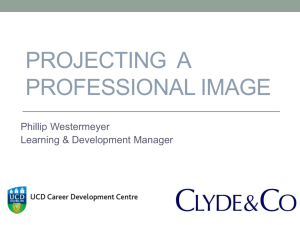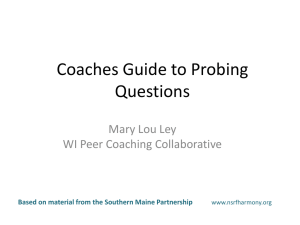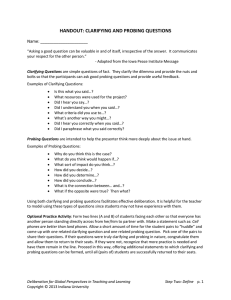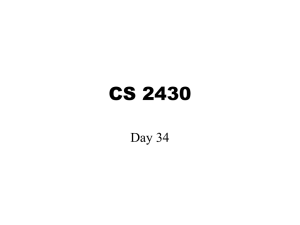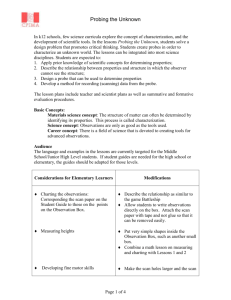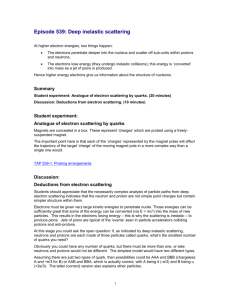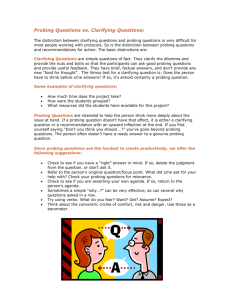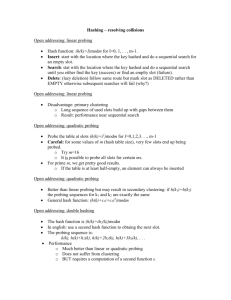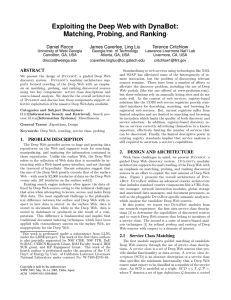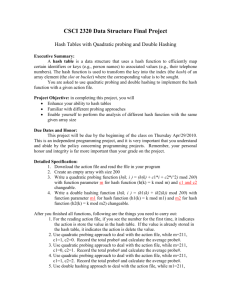The Professional Sales Cycle
advertisement
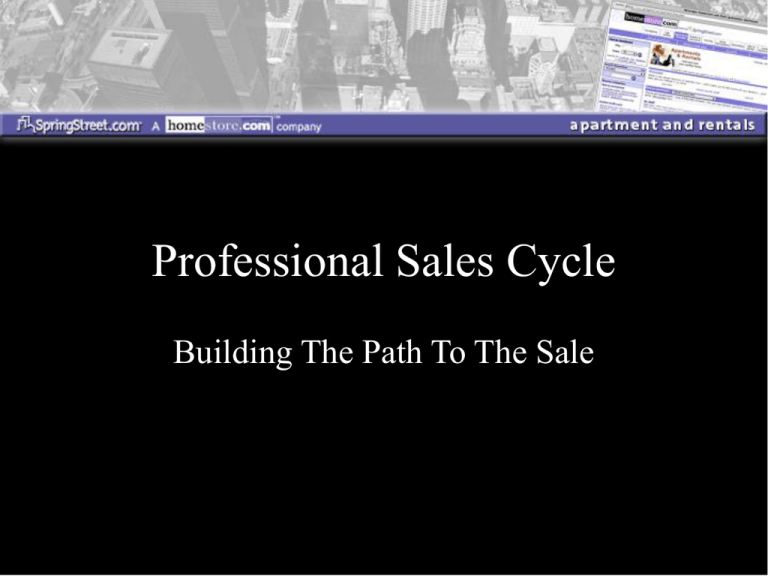
Professional Sales Cycle Building The Path To The Sale Professional Sales Cycle Why Would I Buy This Product? It is about: – – – – Advertising Promotion Positioning Competitive Edge It is not about: – Technology Professional Sales Cycle Value Statement - W.I.I.F.M. Save Me Time/Make Me Money/Save Top Producers have a plan and spend more time in preparation 1. 2. 3. 4. Effectiveness Efficiency Process Knowledge Product Knowledge Professional Sales Cycle Performance Improvement - 5 P’s • Perspective • Plan • Priorities • Persistent • Performance Professional Sales Cycle Why do people buy? Emotion/W.I.I.F.M. Feature = What it is, characteristic Benefit = What it does for me, value of a feature to a customer Value Statement = What it does for me that creates a positive emotion Professional Sales Cycle “Selling is a process of uncovering and satisfying customer needs” Needs = a customer want or desire that can be satisfied by your product or service; expectation. The key words that customers tend to use when express needs include: - need - want - like - interested in - looking for - wish Customer needs are the focal point of any sales interaction. Professional Sales Cycle Opportunity: a customer problem or dissatisfaction that can be addressed by your product or service Need Satisfaction Selling Skills P = Probing, to gather information & uncover needs S = Supporting, to satisfy customer needs w/benefits C = Closing, to gain customer commitment Remember, “Prescription before diagnosis is malpractice.” Professional Sales Cycle Key Points of any Sales Presentation • • • • • • • Never argue I must be sold first If I say it, they doubt it If I ask and the customer tells me, it’s fact If I’m telling, I’m not selling If the customer is telling, he/she is buying If I ask questions, the customer can answer he’s/she’s glad and on my team • Never ask a question that you don’t know the answer to or that you haven’t already given the answer to Professional Sales Cycle Buying Signal Need The Sales Cycle Never Changes: Probe Close Probe Support Close Support Professional Sales Cycle “Funnel Technique” Start with broad, open-ended questions Ask more specific, close-ended questions to fill in details Why Ask Questions? To gain a good understanding of the customer’s needs 3 directions for Questions: 1. Expanding 2. Clarifying 3. Re-Directing Professional Sales Cycle Sales Balance Wheel *Preparation Close Customer Preparation Model Walk Through My Introduction Overview Community Review Why your community? Professional Sales Cycle Need Satisfaction Selling Skills Step #1 = Probing, to gather information & uncover needs Two types of probing questions: 1. Open - Drive conversation, keep control Begin with: How, Tell me, What, When, Where, Why Exercise: Write an open probe question using one of the above words. Professional Sales Cycle Step #1 continued = Probing, to gather information & uncover needs 2nd type of probing questions: 2. Closed - Used to verify information, call for one word answers. Begin with: Do, Are Which, Have, Who, Is, Does, Has Exercise: Write a closed probe question using one of the above words. Professional Sales Cycle Step #2 = Supporting, to satisfy customer needs w/benefits Probing uncovers needs. Next, “support” these needs with a feature of our product. Exercise: Write a supporting question using a feature of our product. Professional Sales Cycle Step #3 = Closing, to gain customer commitment It is now time to gain agreement from our customer by asking a “Trial Close” question. Always wait for a response! “He who speaks first, loses!” Exercise: Write a trial close question using a feature and benefit. Professional Sales Cycle Objections vs. Conditions Objection = When a customer says or feels that our product does not have enough value for them. Conditions = Reasons that prohibit the customer from buying. Key is to identify which one your customer has given you, and respond accordingly. Professional Sales Cycle A.A.A. Structure for Rebuttals Step 1: Acknowledge Step 2: Answer Step 3: Ask “If they are asking a question or offering an objection, they are interested” Professional Sales Cycle “Selling is a process of uncovering and satisfying customer needs””
